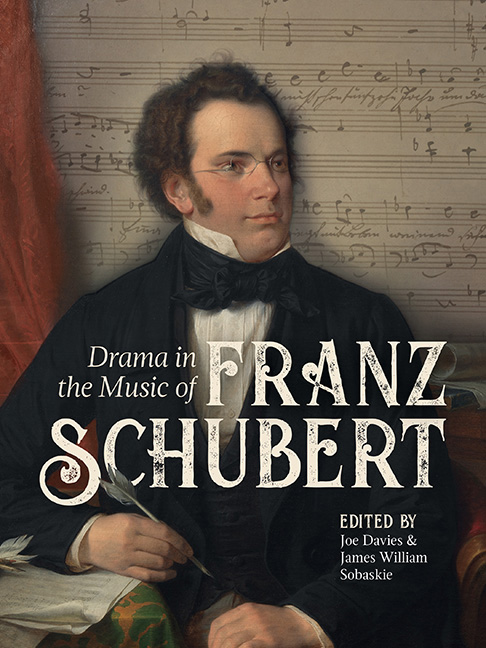Book contents
- Frontmatter
- Dedication
- Contents
- List of Figures
- List of Tables
- List of Contributors
- Acknowledgements
- Preface
- Introduction: Internal Dramas
- PART I STAGE AND SACRED WORKS
- PART II LIEDER
- 4 Schubert's Dramatic Lieder: Rehabilitating ‘Adelwold und Emma’, D. 211
- 5 Gretchen abbandonata: The Lied as Aria
- 6 The Dramatic Strategy Within Two of Schubert's Serenades
- 7 ‘Durch Nacht und Wind’: Tempesta as a Topic in Schubert's Lieder
- 8 Reentering Mozart's Hell: Schubert's ‘Gruppe aus dem Tartarus’, D. 583
- PART III INSTRUMENTAL MUSIC
- Select Bibliography
- Index
6 - The Dramatic Strategy Within Two of Schubert's Serenades
from PART II - LIEDER
Published online by Cambridge University Press: 25 March 2020
- Frontmatter
- Dedication
- Contents
- List of Figures
- List of Tables
- List of Contributors
- Acknowledgements
- Preface
- Introduction: Internal Dramas
- PART I STAGE AND SACRED WORKS
- PART II LIEDER
- 4 Schubert's Dramatic Lieder: Rehabilitating ‘Adelwold und Emma’, D. 211
- 5 Gretchen abbandonata: The Lied as Aria
- 6 The Dramatic Strategy Within Two of Schubert's Serenades
- 7 ‘Durch Nacht und Wind’: Tempesta as a Topic in Schubert's Lieder
- 8 Reentering Mozart's Hell: Schubert's ‘Gruppe aus dem Tartarus’, D. 583
- PART III INSTRUMENTAL MUSIC
- Select Bibliography
- Index
Summary
Introduction
Franz Schubert's ‘Standchen (“Horch, Horch! die Lerch”)’ (D. 899; 1826) and ‘Standchen’, from Schwanengesang (D. 957; 1828), rank among the composer's most beloved Lieder. Contrasting in mood – one exuberant, one ruminative – these songs reflect just some of the tremendous diversity of his oeuvre. The first draws upon text adapted from William Shakespeare's late play Cymbeline and depicts an outdoor scene wherein an ebullient swain cajoles a silent lady nearby, enthusiastically coaxing her to arise and enjoy the beauty of nature. It expresses an active monologue, one in which the central character pursues a courtship goal. The second sets poetry by Schubert's contemporary, Ludwig Rellstab, and it portrays a more serious situation in which the primary persona, whose words betray both distance and desire, discloses yearning too intimate and insecure to be expressed directly. Ultimately revealed to be a rehearsed entreaty to the persona's beloved, rather than an in-person petition, it remains an interior monologue, articulated in isolation indoors by the song's main agent. Nevertheless, the two songs have much in common.
Both are serenades – love songs in which a dramatic persona addresses an object of affection. In each instance, the latter never responds directly to the former's fervent words, yet is reflected in them. Neither Lied is ‘serene’, as the genre's name would imply, and neither seems the least bit casual or disinterested. Indeed, ‘Standchen (“Horch, Horch! die Lerch”)’ and ‘Standchen’ present instances of interpersonal persuasion within which a central character hopes to gain a positive response from an apparently reticent companion. In these Lieder, drama resides within the portrayal of persuasion.
Both songs communicate dramatic implications of their poetic texts via contextual processes derived from the same persuasive plan. These consist of purposefully positioned musical elements that direct attention ahead. Eliciting expectations and producing a perception of growing momentum that culminates in a climactic musical arrival, they underscore and vivify each text's unique dramatic narrative. Understanding these contextual processes involves identification of their shared strategy's functional phases, analysis of their expressive elements, assessment of their musical effects, and interpretation of the expressive messages they convey.
- Type
- Chapter
- Information
- Drama in the Music of Franz Schubert , pp. 133 - 150Publisher: Boydell & BrewerPrint publication year: 2019



